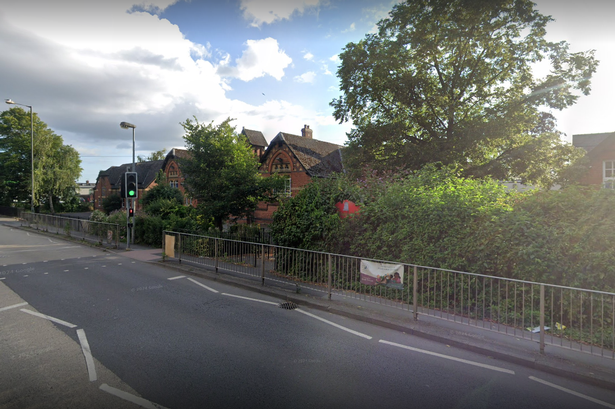The incident at a Hereford school, which triggered a police response, unfolded as the school day neared its end. Local reports indicated that authorities received calls concerning a man observed near the school grounds, reportedly carrying a weapon. While the exact nature of the weapon remains unconfirmed in initial reports, the presence of a potentially armed individual in proximity to a school understandably prompted immediate concern and a swift reaction from law enforcement. The timing of the incident, just before the school’s scheduled closure, amplified the anxiety as students, staff, and parents prepared for the end of the school day. This close proximity to dismissal likely heightened the perceived risk, raising concerns about potential encounters between the individual and members of the school community. The incident underscores the vulnerability of schools and the vital importance of rapid response protocols in situations involving potential threats.
Upon receiving reports of the armed individual, local police were dispatched to the school. Their primary objective was to secure the area, ensuring the safety of students, staff, and anyone else present on the school grounds. The police presence served to both deter any potential hostile actions by the individual and to initiate an investigation into the circumstances surrounding the reported weapon. This immediate response was crucial in mitigating the potential for escalation and ensuring the well-being of everyone in the vicinity. The police likely established a perimeter around the school to contain the situation and control access to the area while they conducted their investigation. This controlled environment allowed officers to systematically search for the individual, gather evidence, and assess the credibility of the initial reports.
The school administration, in conjunction with law enforcement, likely implemented established safety protocols to manage the situation. These protocols could include lockdown procedures, where students and staff are instructed to remain in designated safe areas within the school building. Such procedures are designed to minimize exposure to potential threats and provide a controlled environment for law enforcement to operate. Communication between the school administration, police, and parents would have been paramount during this period. Updates and instructions disseminated through various channels, such as phone calls, text messages, and social media, would aim to keep parents informed and reassure them of the measures being taken to ensure their children’s safety. The coordinated efforts of the school and police aimed to bring the situation under control as quickly and safely as possible.
As the investigation unfolded, police would have focused on locating the individual reported to be carrying the weapon. This would involve a thorough search of the school grounds and surrounding areas, potentially with the assistance of specialized units such as K-9 units or aerial surveillance. The search strategy would prioritize the safety of the officers involved, the school community, and the wider public. Simultaneously, investigators would gather witness statements and review any available security footage to piece together a comprehensive understanding of the events leading up to, during, and after the initial report. This information would be critical in determining the nature and extent of the threat, identifying the individual involved, and ultimately ensuring the safety and security of the school and its surrounding community.
The incident undoubtedly caused significant disruption and anxiety within the school community. Parents, understandably concerned for their children’s safety, would have experienced moments of intense worry as they awaited updates and confirmation that the situation was under control. The incident serves as a stark reminder of the anxieties faced by schools in an era of heightened security concerns. It also highlights the essential role of strong communication and collaboration between schools, law enforcement, and parents in responding to potential threats. The emotional impact on students, staff, and parents would likely necessitate post-incident support and counseling services to address any trauma or lingering anxieties resulting from the incident.
In the aftermath of such incidents, schools often review and refine their safety protocols to identify areas for improvement and ensure preparedness for similar events in the future. This could involve enhancing security measures, strengthening communication systems, and conducting regular drills to practice emergency procedures. The incident also provides an opportunity for the wider community to reflect on broader issues of safety and security in educational settings and to consider strategies for fostering safer environments for students and staff. This may include discussions about gun control, mental health support, and community policing initiatives aimed at preventing such incidents from occurring in the first place. The goal is to create a learning environment where students feel safe, secure, and empowered to focus on their education.














